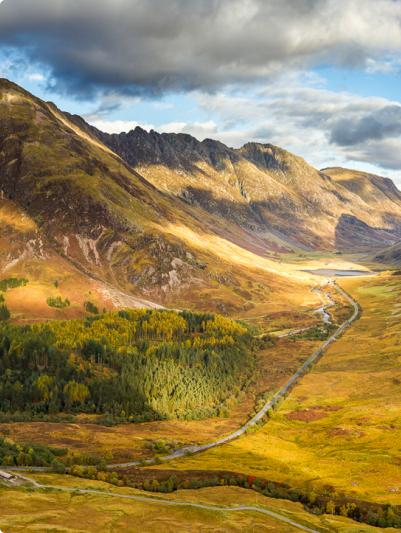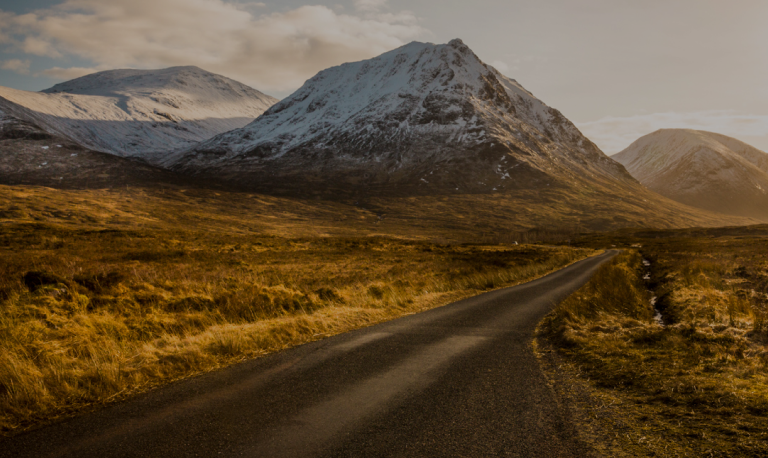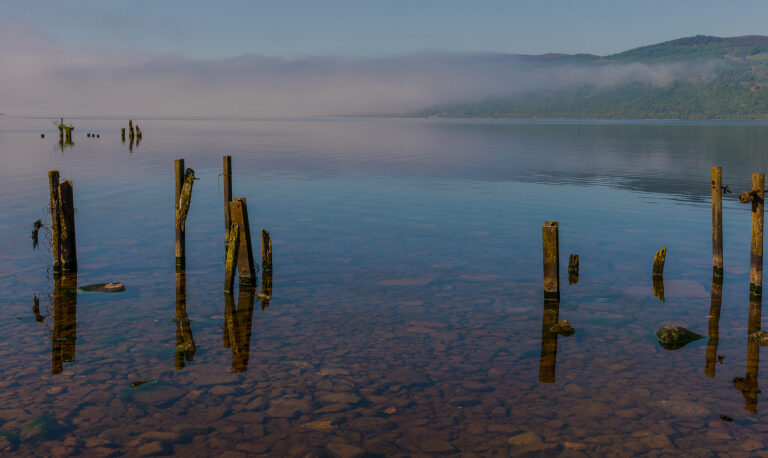Island-Hopping in the Outer Hebrides
I’d travelled extensively in Scotland over the years but had not yet made it to one of the country’s most alluring destinations.
Growing up in Fife on Scotland’s east coast, the island chain on the extreme western fringe of the country had always felt distant and mysterious to me – perhaps due to its distinct language (it’s the last Gaelic-speaking stronghold in the country) or more likely because photos make it look more like the Caribbean than the North Atlantic!
To remedy this, I set off on a Hebridean Island Hopping adventure …
View this post on Instagram
Isle of Barra
While it’s possible to fly to Barra to land on the world’s only beach runway for scheduled flights, I took the Calmac ferry from Oban which allowed me to bring my own car. A scenic, 5-hour journey ended as we sailed into Castlebay – the main village on Barra.
Any idea that sightseeing wouldn’t start until we docked was shattered with a stunning view of Kisimul Castle – the ‘Castle in the Sea’ – which I rushed outside to photograph. This impressive fortress dates back to the 15th century and is a testament to the powerful MacNeil Clan who ruled this island.
Barra is often claimed to be the most beautiful Hebridean island, and I was lucky enough to find it basking in warm September sunshine (a trend which would continue through the week, how lucky am I?).
Resisting the temptation to spend the day on a beach, I hiked to the Iron Age fort of Dun Ban which offered jaw-dropping views across the open Atlantic and down the weather-beaten coast.
I quickly realised that driving around these islands brings the strange feeling of not always being entirely sure what island you’re on. Roads and causeways twist across peninsulas and connect different landmasses, with the Isle of Vatersay – connected to Barra by a causeway built in 1991, being a perfect example.
Vatersay is home to some of the most stunningly beautiful beaches I’ve ever encountered in the world, and well worth a short island-hop for!
View this post on Instagram
Isle of Eriskay
Reluctant to depart beautiful Barra, I dragged myself onto the next ferry to Eriskay – a tiny island which I had no expectations about. Hazy memories from high school history recalled that Jacobite Bonnie Prince Charlie had first set foot on Scottish soil here on his way to the disastrous Battle of Culloden in 1746.
As the ferry docked on Eriskay, every other car headed straight up the road towards South Uist, while I stopped and strolled along a deserted Eriskay Beach. White, lunar-looking sand and crystal clear water combined with panoramic views across to Barra.
While Charlie’s life ended in tragedy, he must have thought he’d landed in paradise when he arrived on Eriskay. An unexpectedly wonderful way to start the day!
View this post on Instagram
The Uists
I continued north across another causeway to South Uist. Along with Benbecula and North Uist, these islands are collectively known as The Uists and they instantly offered a very different landscape to what I’d seen so far. Fringed on their west coast with endless miles of sandy beaches backed with machair (a Gaelic word meaning fertile, grassy plain), the rest of the islands are a unique ‘waterworld’ of fresh and saltwater lochs. At times it felt like being on another planet.
As I drove through this otherworldly landscape I could not miss Our Lady in the Isles – a giant sculpture that towers over the road. It was built in the 1950s following proposals for a missile testing range on Uist which locals felt was a threat to their way of life.
Where do you begin sightseeing on the Uists? You can go wildlife spotting at the RSPB Reserve at Balranald – famous for its corncrakes which are now one of Europe’s most endangered species, or climb Rueval on Benbecula for a 360 degree Hebridean panorama – probably the finest hill-walk in the Hebrides.
I visited the incredible Neolithic burial cairn at Barpa Langass and followed the Uist Sculpture Trail which showcases seven works by local artists dotted around remote locations. A week here would barely be enough to scratch the surface, and I have vowed to return.
View this post on Instagram
Isle of Harris
Another day, another ferry, and I was very excited to be making my way to the Isle of Harris. This island had been on my bucket list ever since I’d seen photos of Luskentyre Beach – a vast expanse of white sand, turquoise waters, and distant views of towering mountains.
Although referred to as two separate islands, Harris and Lewis are part of the same landmass. Some say the distinction dates back to a split in the MacLeod clan who dominated the Western Isles for centuries, while some say the wild mountains in North Harris turned them into two virtually separate islands.
I excitedly made my way up the west coast of Harris towards Luskentyre Beach. Despite my eagerness to visit, I couldn’t resist countless photo stops as unreal panoramic views across beaches and mountains opened up before my eyes.
The reality of Luskentyre did not disappoint. Endless miles of pristine sands combines with azure water, while the constantly changing cloud and light create stunning vistas across distant mountains and islands. Photos do not do it justice – you simply have to experience it for yourself!
Aside from its beaches, you’ll find countless craft shops dotted around where Harris Tweed is made by hand, as well as the Isle of Harris Distillery which is one of Scotland’s newest distilleries. It’s so new that the whisky isn’t ready yet, so for the next few years, you’ll have to make do with their gin which is made using sugar kelp harvested from the sea.
Harris is also where boats depart to the UNESCO World Heritage Site of St Kilda – an isolated archipelago 40 miles west of Harris which was abandoned by its last 30 residents in 1930.
A highlight of my time on Harris was a visit to the North Harris Eagle Observatory, which is saying something as I didn’t see an eagle! A wonderful 2 km walk through a stunning mountain path leads you to a small hut where you can relax and scan the hillside for these iconic birds. The beautiful walk is reason enough to visit, whether you get lucky with a sighting or not.
View this post on Instagram
Isle of Lewis
I drove north through the wild mountains of North Harris into the rather bleak landscape of windswept moorland in the south of Lewis. The largest of the Hebridean islands – Lewis is renowned for its ancient, Neolithic monuments and my first stop was the most famous: the 5,000-year-old Callanish Standing Stones.
After a week wandering deserted beaches and empty hills, the crowds here came as a bit of a shock. My advice: time your visit to avoid early afternoon when the tour buses arrive. The stones were beautiful though, and it’s an amazing novelty to be able to get up close and touch them – a far more satisfying experience than being fenced off at Stonehenge. Speaking of Stonehenge, the stones at Callanish are 500 years older than their English counterparts!
As I made my way to the west coast of Lewis, the barren landscape gave way to wonderful beaches and rich machair grasses.
Lewis was Viking territory for hundreds of years, and a Viking chess set was found on the beach at Uig in 1831. The beautifully carved Lewis Chessmen are on display at the National Museum of Scotland in Edinburgh and the British Museum in London, but you can now see 6 of the pieces at the new museum at Lews Castle in Stornoway.
The entire west coast of Lewis is a treasure-trove of archaeological and historical sites.
Despite my luck finally running out with the weather, I loved my visit to Dun Carloway Broch – one of the best-preserved Iron Age broch towers in Scotland, and Gearrannan Blackhouse Village, where you can experience a more modern, traditional Hebridean home and see a weaving demonstration.
View this post on Instagram
Back to the Mainland
A final ferry from Stornoway to Ullapool returned me to the Scottish mainland – and to reality. It’s only after visiting the Outer Hebrides that you can appreciate the astounding diversity these islands offer; towering mountains and world-class beaches combine with ancient historic sites and unique wildlife.
Photos can’t do justice to the sheer, jaw-dropping natural beauty of this place. The turquoise waters and constantly changing skies have to be seen with your own eyes to be believed.
I barely scratched the surface of these magical islands in a week, but I certainly had fun trying!
Scott Smyth
P.S. Our self-guided Hebridean Island Hopping trips include carefully-selected accommodation, ferries, highlighted road map, a comprehensive information pack with our recommendations for sightseeing and the best places to eat, and our emergency contact number. To receive a holiday proposal please send us an enquiry.


